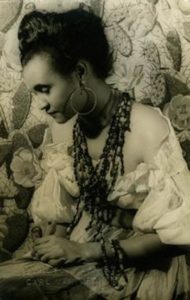
Beryl McBurnie
*Beryl McBurnie was born on this date in 1917. She was a Trinidadian dancer, instructor, and administrator.
From Woodbrook, Trinidad, her life was one of total dedication to the folk dance of Trinidad and Tobago and the Caribbean. She attended Tranquility, and after finishing high school, she went to a teacher's training college and left for Columbia University in 1938. At that time, Trinidad could not provide McBurnie with opportunities for growth in her art. This led her to New York, where she studied with Martha Graham. As La Belle Rosette (her theatrical name), she became an enormously successful dancer.
She had many performances in New York, and her dancing was so passionate and colorful that one observer described her as "legend fire." Katherine Dunham, known for her African and Caribbean dance rhythms, was greatly influenced by her work with McBurnie. She returned in 1940 and put on her first official dance concert called 'A Trip Through the Tropics," which was so successful that it ran for several days. From 1942 to 1945, she worked with a highly talented group of dancers called the Beryl McBurnie Dance Troupe. She continued to work abroad, demonstrating Caribbean dance at many colleges in the U. S. and did research in South America and Trinidad on the origins of Caribbean dance.
She was known as the Mother of Caribbean Dance. She has received many awards and accolades, including the Golden Arrow Crown from Guyana in 1966 and the Humming Bird Gold Medal of Honor from Trinidad and Tobago in 1969. She was honored by the Alvin Ailey Dance Company in New York in 1978 with Katherine Dunham and Pearl Primus and was honored at Carifesta in Barbados in 1981. McBurnie's life cannot be fully appreciated unless one understands the state of the arts at the time in Trinidad.
The community in which she lived was bent on being very English. What happened at funerals and at wakes of Black people and the dances of the Hispanic Creoles was to be kept as far away from the community as possible. This was an association with slavery, a step back, not a step forward. And yet, Beryl was fascinated with these folk cultures. What she did in the 1930s and '40s was seen by many as negative to the Black race in Trinidad and other areas of colonization that were trying to mimic the whites.
In this environment, she wanted to legitimize Black folk dance in Trinidad. After a long day's work, McBurnie died on March 30, 2000.
The Book of African American Women
150 Crusaders, Creators, and Uplifters
by Tonya Bolden
Adams Media
ISBN 1-58062-928-8